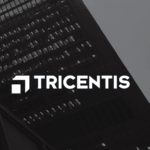Company Overview The client operates over 1,100 department stores across the United States. Their iconic…
Case Study
Plantronics Applies Agile for R&D Teams: Agile for Hardware Case Study
Company Details
Industry: Audio - Bluetooth & Wireless Headsets
Company Size: Generates close to $900 million in annual revenue
Location: Santa Cruz, California
Products: Agile for Hardware
Cprime Services:
Executive Summary
With the shifting deadlines, changing priorities, and engineering unknowns that are common to any R&D department, a standardized but flexible process is critical to enabling team members to focus on design and engineering tasks. With the help of Cprime consultants and Atlassian tooling experts, they underwent an Agile for Hardware transformation resulting in greater efficiency, accountability, and predictability.

The Challenge
Plantronics is a 50-year-old audio innovation company that’s obsessed with removing the barriers to simple, clear communication. Best known for its Bluetooth headsets and wireless headphones, the Santa Cruz, Calif.-based company offers a range of wearable electronics products for unified and mobile communications, gaming, music and entertainment. Plantronics generates close to $900 million in annual revenue from enterprise and consumer customers.
Research and Development activities at the company range from delivering demos to open-ended research to form-factor proofs of technical concepts brought to life by a rapid prototyping process. Building proofs of concept involves developing hardware and writing firmware and software. The R&D team has the capability to design its own hardware or to use external vendors. Past projects from the team include Plantronics prototypes Wearable Concept 1 and Wearable Concept 2, which are headsets embedded with numerous sensors for tracking head motion and orientation, including an accelerometer, a gyroscope, a magnetometer, and a compass. The devices also feature a pedometer, freefall detection, an MFI chip for IOS integration and a suite of APIs for integrating with Android, Mac and Windows.
With the shifting deadlines, changing priorities, and engineering unknowns that are common to any R&D department, a standardized but flexible process is critical to enabling team members to focus on design and engineering tasks. In 2016, leadership changes led to an opportunity to fine tune the company’s R&D processes. Portfolio Manager Paige Fordice and R&D Technical Manager Catelyn Orsini set out to adopt an Agile practice to bring structure to their team’s work.
The Solution
Finding Cprime
The software development organization at Plantronics had already successfully adopted Agile. And, Orsini thought there was potential for Agile to work in a multi-disciplinary R&D setting. She said, “When I found the Certified Agile Hardware course, taught by Cprime’s Chief Scientist, Kevin Thompson, Ph.D., I thought it seemed promising.” She and Fordice enrolled. After they completed the Certified Agile Hardware Practitioner course, Dr. Thompson helped provide the information, answers, and materials needed to propose that Agile be adopted as the primary development methodology in the Plantronics R&D department. Following a Plantronics site visit to interview engineering team members and key stakeholders to consider their specific concerns and challenges, Thompson presented his assessment of the group’s needs. The Agile transformation kicked off with a February on-site training.
Tweaking Agile for Hardware

Like most companies, Plantronics selected a Sprint length of two weeks. Their Sprint Planning meeting ensured that the team could implement the most valuable things in the Sprint, which required assessing value, dependencies, and work that could be done by different people on the team throughout the Sprint.
The last point was of particular importance for this team, Fordice said. “We had to approach planning Sprints from an individual perspective, given that each team member had different skill sets.”
Thompson emphasized the importance of this difference between Agile for hardware and Agile for software. “In the software space, there’s the notion that everyone can do anything, so you don’t need to worry too much about who is doing what,” he said. “It’s not completely true, but it’s a lot closer to being true for software people than it is for hardware people. On a cross functional team of engineers, each member is more highly specialized than the members of a software development Scrum, so you need to make sure that you are mixing the loading of the skill set as well as the team as a whole. You need to ask, ‘Are we over- or under-loading someone who has a particular skill?’”
Another challenge in hardware development is that highly specialized professionals know more about the sizes of tasks than do other team members, so instead of a collective sizing process, the team required an individually driven sizing process.
Getting to the Sprint
Prior to the Scrum launch, another Cprime consultant helped the R&D team at Plantronics to set up Atlassian’s proprietary Jira project management software and Confluence team collaboration software to provide a repository for documentation. With those tools in place, the toughest part of setting up the team’s first Sprint was Story writing. Orsini said, “It’s one thing to learn in the training about how to write good Stories; it’s another thing to do it on a real R&D project already in flight.” Thompson came to the company’s headquarters to help the group navigate such sticky spots and share models of what they should look like ideally.
Once the Plantronics group had groomed and prepared a backlog with Thompson’s guidance, they met daily to go over progress. When it was time to end the first Sprint, Thompson came back to coach the group through review and retrospective meetings, starting another backlog, and kicking off another Sprint planning.
Overcoming Resistance
As the technical manager of a team of experts, Orsini knew there would be questions about the process, but said Agile inherently answers many of them. She said, “It was helpful to have a very detailed guidebook that anticipated and answered questions like, ‘What is each person’s role? What is every Scrum ceremony supposed to accomplish? From beginning to end, how long is everything supposed to take?’
“Our Research and Development team functions at the highest level in the industry,” said Cary Bran, Vice President of Strategy, Research and Development at Plantronics, “but any team should always take advantage of great tools, when they are available, to help them work as efficiently and effectively as possible. Our team’s adoption of Agile was a boost to their planning, prioritizing and efficiency efforts and we’re happy to be able to continue to utilize it.”
Fordice said it was useful to have Thompson on-site walking the team through the process and talking them through the tools and documentation. She added, “Once you get used to the rhythm or the cadence, it becomes a lot clearer and it also allows each team member to know what the other team members are doing.”
Atypically, the first Plantronics R&D Sprint began not at the launch of a new project but mid-project. Thompson helped the group resolve questions about shifting gears to Agile after a project was already underway. Estimating in R&D, where tasks can be more open-ended than concrete, can also present a challenge, Orsini said, but teams learned quickly, and more senior members with expertise in hardware, firmware, or software pitched in when there were questions about estimation or duration.
Progress
When Plantronics R&D was on Sprint 19, each Sprint had become easier, Orsini said. Daily meetings, improved structure and stricter discipline had enabled better processes.
Fordice added that Sprint planning had served to improve communication and organization while helping product owners set priorities and resist being sidetracked. Orsini said the new process also helped her manage resources and tasks performed outside of the R&D team — whether within the Plantronics organization, by contractors, or by external resources. “For example, we worked with an external company to build the circuit boards,” she said. “This process allows you to keep track of work even when it is outside of your organization.
The Results
For R&D, the benefits of adopting Agile are readily evident. “Overall, accountability has increased, we’re meeting our quarterly demo requirements, and we’re meeting all our key project deadlines,” Fordice said.
What’s more, Orsini said, overnight and weekend work has been eliminated. “Scrum training discourages a crunch-time work style,” both on the R&D team and among stakeholders. With more predictability, teams can better pace themselves and meet deadlines easily.
Sprint reviews are also useful when they reveal that things went off schedule; there are no surprises. “You know quickly, and you can manage expectations upwards, re-prioritize in real time, and adjust.”
Overall, Fordice and Orsini agreed that the new process enables the team to work at a steady pace with clear understanding of priorities and has improved collaboration among geographically distributed team members. Their Scrum journey has been successful enough that they continue to use Scrum one year later.
Interested in similar results for your organization? Explore our flexible Agile for Hardware and Atlassian tooling solutions.
About Cprime
Cprime is an industry-leading, full-service global consulting firm with a focus on providing integrated and innovative solutions around digital transformation, product, cloud, and technology. With over 20 years’ experience, we provide strategic and technical expertise to businesses across more than 50 industries. Our team of advisors and technical experts have the know-how to meet organizations where they are to develop actionable solutions and solve business challenges. We also collaborate with our expansive network of partners to design, deploy, and harmonize technology stacks across organizations. Our mission is to empower visionary business leaders and teams to reimagine the future of work to achieve better outcomes.
Want to share with a colleague? Download the PDF
